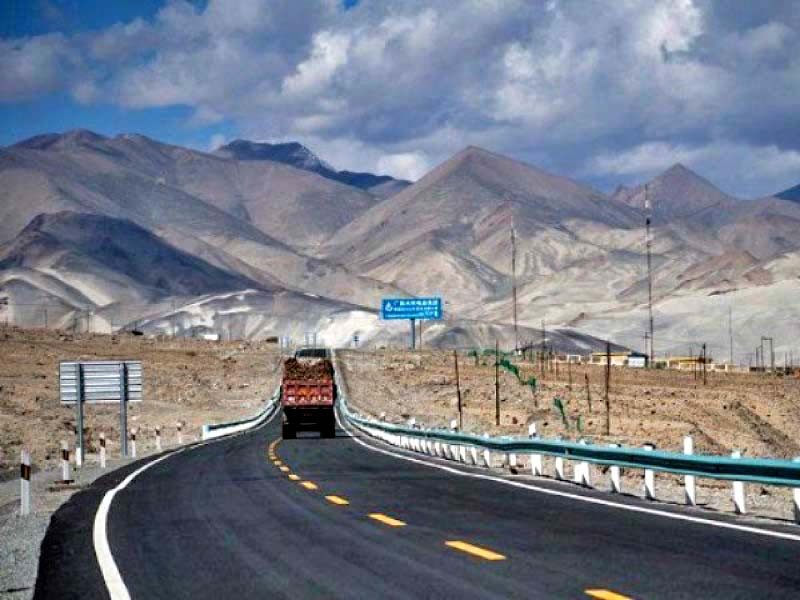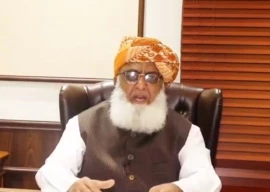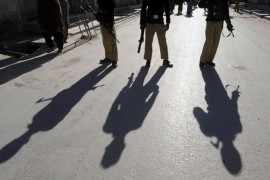
China hosted the third Belt and Road Forum for International Cooperation on Oct 17-18 in Beijing where top-level leaders from around the world were in attendance. The forum marked the 10th anniversary of the Belt and Road Initiative (BRI) championed by President Xi Jinping to recreate the fabled Silk Road to boost global trade through enhanced connectivity.
The grand gathering took place at a time when great geopolitical upheaval spawned by the conflicts in Ukraine and the Middle East has sharply polarized the world and widened the chasm between the Collective West and the Global South. These devastating wars have called into question the “rules” of the rules-based international order dominated by the US and its allies, triggering a clarion call from the Global South for a multipolar world. The BRI forum was significant for its underlying messaging. Let’s discuss the key takeaways.
First, the summit has sought to dispel the impression that the BRI has lost steam, or China’s lending largesse has waned. President Xi said in his speech at the forum that the BRI has progressed from “sketching the outline” to “filling in the details” as “blueprints have been turned into real projects.” Today, the BRI has thousands of projects in every corner of the world, generating a staggering $2 trillion in contracts. Another $97.2 billion worth of projects were signed at the Beijing forum. Cooperation under this initiative has extended from the Eurasian continent to Africa and Latin America as 150-plus countries and over 30 international organizations have joined the initiative.
Some analysts describe the joint construction of BRI as China’s version of the “Marshall Plan”, under which the US had spent approximately $150 billion in today’s dollars on 16 European nations between 1948 and 1951. But they ignore the most important point. The Marshall Plan was designed to control Western Europe economically and politically, while the BRI seeks neither economic control nor holding sovereignty hostage. It is a public service system designed to promote the common economic and social development of China and co-building countries.
Second, the BRI is not for or about one country. It is about addressing unequal development spawned by endemic economic inequality. A sustained smear campaign could not blunt the irresistible allure of BRI because it is not dictated by one country for its exclusive geopolitical interests. Instead, as President Xi said the BRI is based on the principle of “planning together, building together, and benefiting together.” It doesn’t divide the world in blocs. It doesn’t compartmentalize the world. It doesn’t shut out countries based on any geopolitical rivalry.
The BRI transcends differences between civilizations, cultures, social systems, and stages of development in humanity’s pursuit of development for all. This is exemplified by the fact that China has become a main trading partner of more than 140 countries and territories and a primary source of investment for many more countries.
Third, China has no appetite for engaging in geopolitical rivalry or bloc politics because it doesn’t aspire to global dominance. China has historically steered clear of internal politics of other countries. Of late, however, Beijing played the role of peacemaker in a region starkly divided by the American bloc politics for geopolitical purposes. China brokered rapprochement between arch-rivals Iran and Saudi Arabia in a singular diplomatic victory that might define the future of the Middle East.
 It has been ten years since the China-Pakistan Economic Corridor (CPEC), the multibillion-dollar flagship project under President Xi Jinping’s $1.4 trillion Belt and Road Initiative, was launched. PHOTO: FILE
It has been ten years since the China-Pakistan Economic Corridor (CPEC), the multibillion-dollar flagship project under President Xi Jinping’s $1.4 trillion Belt and Road Initiative, was launched. PHOTO: FILE
In these tumultuous times when the Collective West is once again dividing the world into “Us vs Them” on the Ukraine and Gaza conflicts, China is building an “inclusive and interconnected world” for the common development of mankind. These starkly contrasting approaches perfectly define the two major global players and their legacies.
Fourth, China says it stands for peace and progress for all as it has never invaded any other country, nor bullied others, nor engaged in proxy wars, nor participated in military bloc confrontation. Peace and cooperation was the spirit of the millennia-old Silk Road. The same spirit now permeates the Belt and Road cooperation because, as President Xi said, “the pioneers of the ancient silk routes won their place in history not as conquerors with warships, guns, horses or swords. Rather, they are remembered as friendly emissaries leading camel caravans and sailing ships loaded with goods.”
In stark contrast, the US avowedly seeks to invest in “strengths, align with allies, and compete with China”. In a June 2022 speech outlining the Biden administration’s China strategy, Secretary of State Antony Blinken described China as the “most serious long-term challenge to the international order”. However, President Xi offered a word of advice to the US administration: “Viewing others’ development as a threat or taking economic interdependence as a risk will not make one’s own life better or speed up one’s development.”
Fifth, China is cognizant of the “headwinds and tailwinds” the BRI might encounter. The Western policymakers see the project as a tool for China to spread its geopolitical and economic influence. For this reason, the US has consistently tried to stymie the growth of BRI by pressuring and coercing countries into pulling out or staying away from it – and even by launching parallel infrastructure development initiatives. Publicly, the US says that it only wants to de-risk the global economy and “diversify supply chains that have become overly dependent on the world's second-largest economy”.
President Xi warned against “de-coupling” from China which foresees its total trade in goods and services exceeding $32 trillion and $5 trillion, respectively over the next five years. “Ideological confrontation, geopolitical rivalry, and bloc politics are not a choice for us,” he said. “What we stand against are unilateral sanctions, economic coercion and decoupling and supply chain disruption.”
Sixth, China has sought to give a fresh impetus to the BRI which some in the West believe is struggling due to the purported slowing down of the Chinese economy. Beijing reaffirmed that BRI partners will continue to benefit from China’s generosity for quality development. President Xi said that the China Development Bank and the Export-Import Bank of China will each set up a RMB 350 billion financing window, while another RMB 80 billion will be injected into the Silk Road Fund to support BRI projects.
This shows China remains unperturbed by the West’s portrayal of the BRI as a “debt trap” that seeks to ensnare developing countries with loans that will be impossible for them to repay. A little research deflates the debt trap narrative peddled by BRI critics to discredit the “project of the century”. Let’s see how.
The World Bank stats show that the overall debts of various countries have continued to swell, but the joint construction of the BRI has helped weaken the debt levels of the governments jointly building the multibillion-dollar corridor. On the contrary, Western commercial creditors and multilateral lenders are the largest creditors of developing countries. This means the US continues to pile up the debt burden on developing countries by printing dollars and raising interest rates.
And lastly, third Belt and Road Forum was the reiteration of China’s unwavering commitment to the revival of Silk Road for high-quality inclusive development. Beijing believes much of the BRI criticism carries anti-Chinese prejudice and a desire to contain its bewildering rise. President Xi is convinced that the BRI is on the “right side of history” as he unveiled eight major steps for the “golden decade” ahead to support the pursuit of high-quality Belt and Road cooperation. These steps focus more on high-tech projects such as digital finance, e-commerce platforms, artificial intelligence governance, green infrastructure, and climate change.
The Chinese leader called upon the BRI partners to “stay focused, persevere, and keep moving forward until our goal is met”. Nonetheless, he is also aware of the various global risks and challenges but vows to ensure the safety of BRI projects and personnel at any cost.
1731907834-0/Jonathan-Majors-and-Meagan-Good-(2)1731907834-0-405x300.webp)
1731906859-0/Jonathan-Majors-and-Meagan-Good-(1)1731906859-0-165x106.webp)

1724657897-0/Untitled-design-(2)1724657897-0-165x106.webp)



1728020241-0/Express-Tribune-Web-(12)1728020241-0-270x192.webp)




1697720408-0/image-800x600-(16)1697720408-0-270x192.webp)







COMMENTS
Comments are moderated and generally will be posted if they are on-topic and not abusive.
For more information, please see our Comments FAQ